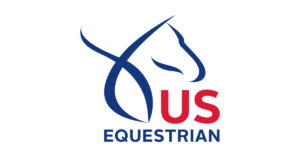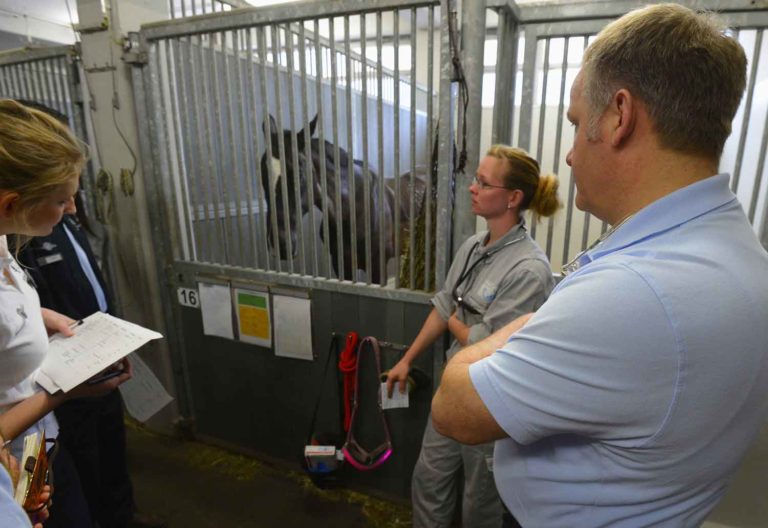
Following a US Equestrian (USEF)-led summit of veterinary professionals earlier this year, the Federation has released a white paper summarizing the group’s recommendations on best practices in sport horse medicine.
In March, 28 veterinarians gathered at the World Equestrian Center in Ocala, Florida, to review:
- Examinations and preventative health measures
- Injury prevention and management
- Fitness to compete
- Wearable technology/biometrics
- Science-based treatments vs. anecdotal evidence-based treatments, including joint injections, vitamins and minerals, nutrition, homeopathy, and shockwave
- Treatment modalities
- Research priorities
US Equestrian has released a white paper that memorializes the conversation and input from all the veterinarians who attended the gathering. The paper is available here.
“Following the recent USEF Veterinary Summit on Sport Horses, we needed to draft a comprehensive white paper that captures the key discussions, scientific findings, and consensus recommendations from the summit,” said co-author Dr. Tracy Turner, president of the American Association of Equine Practitioners. “This document will serve as a resource for advancing equine athlete health and welfare, informing evidence-based policy, and guiding best practices within the sport horse community. We care deeply about these horses we use for sport.
“Every horse, regardless of discipline, merits the level of care we have outlined in the white paper. The well-being of the horse should be the guiding principle in all that we do.”
The authors believe the care and safety of horses is a collective responsibility of veterinarians, trainers, and owners, with veterinarians prioritizing the horse’s health over competitive pressures. The white paper defines fitness to compete, which is understood to refer to a horse’s overall readiness, health status, and freedom from doping.
Veterinarians should work with owners to regularly and thoroughly review horses’ wellness status, using advanced diagnostic tools and biometric systems where appropriate to assess a horse’s fitness to compete.
Overtraining and excessive competition can harm horses’ health, though the appropriate amount of work can vary significantly between horses and situations.
The paper emphasizes the importance of muscle recovery, reiterating that rest is the most effective tool to aid in this area. Other areas of focus include therapeutic treatments, homeopathic treatments, supplements, and vitamins and minerals. Veterinarians remind readers that appropriate, individualized, and diagnostic-based use of tools like orthobiologics and shockwave can be beneficial when used within Federation guidelines. Readers should also be aware that the U.S. Food and Drug Administration does not regulate homeopathic products or dietary supplements, and there is limited scientific evidence to support the use of many of these treatments.
The paper’s authors encourage future research in the following areas:
- Competition numbers: how frequently horses are entered in shows and how often they compete, compared alongside demographics such as age, competitive success, and injury history. They also suggest researching longevity at various levels of competition compared with frequency of competition.
- Appropriate nutrition options to limit the need for post-competition “muscle recovery” treatments.
- Evaluation of potential “recovery” biomarkers to assess appropriate treatments to aid in recovery.
- Evaluation of wearable technology to evaluate fitness and preparation (already being done in eventing), as well as impacts of pollution, heat, and shipping.
- Detection of shockwave biomarkers.
If you are interested in supporting these research efforts, consider making a donation to the Chromatic Fund, a collaborative initiative of the American Association of Equine Practitioners, US Equestrian, KC Branscomb (breeder of the horse Chromatic), and The Foundation for The Horse. The Chromatic Fund will fund innovative research and education initiatives designed to improve the health and welfare of performance sport horses. For more information or to donate, visit https://www.usef.org/donate?selected=44.
Related Reading
- The State of Sport Horse Welfare
- Research Spotlight: Preventing Heat Stress in Athletic Horses
- EVJ Highlights Ongoing Work to Improve Racehorse Safety
Stay in the know! Sign up for EquiManagement’s FREE weekly newsletters to get the latest equine research, disease alerts, and vet practice updates delivered straight to your inbox.

![[Aggregator] Downloaded image for imported item #18782](https://s3.amazonaws.com/wp-s3-equimanagement.com/wp-content/uploads/2025/11/03125751/EDCC-Unbranded-13-scaled-1-768x512.jpeg)


